DynamoDB Global Tables
 Tobias Schmidt
Tobias Schmidt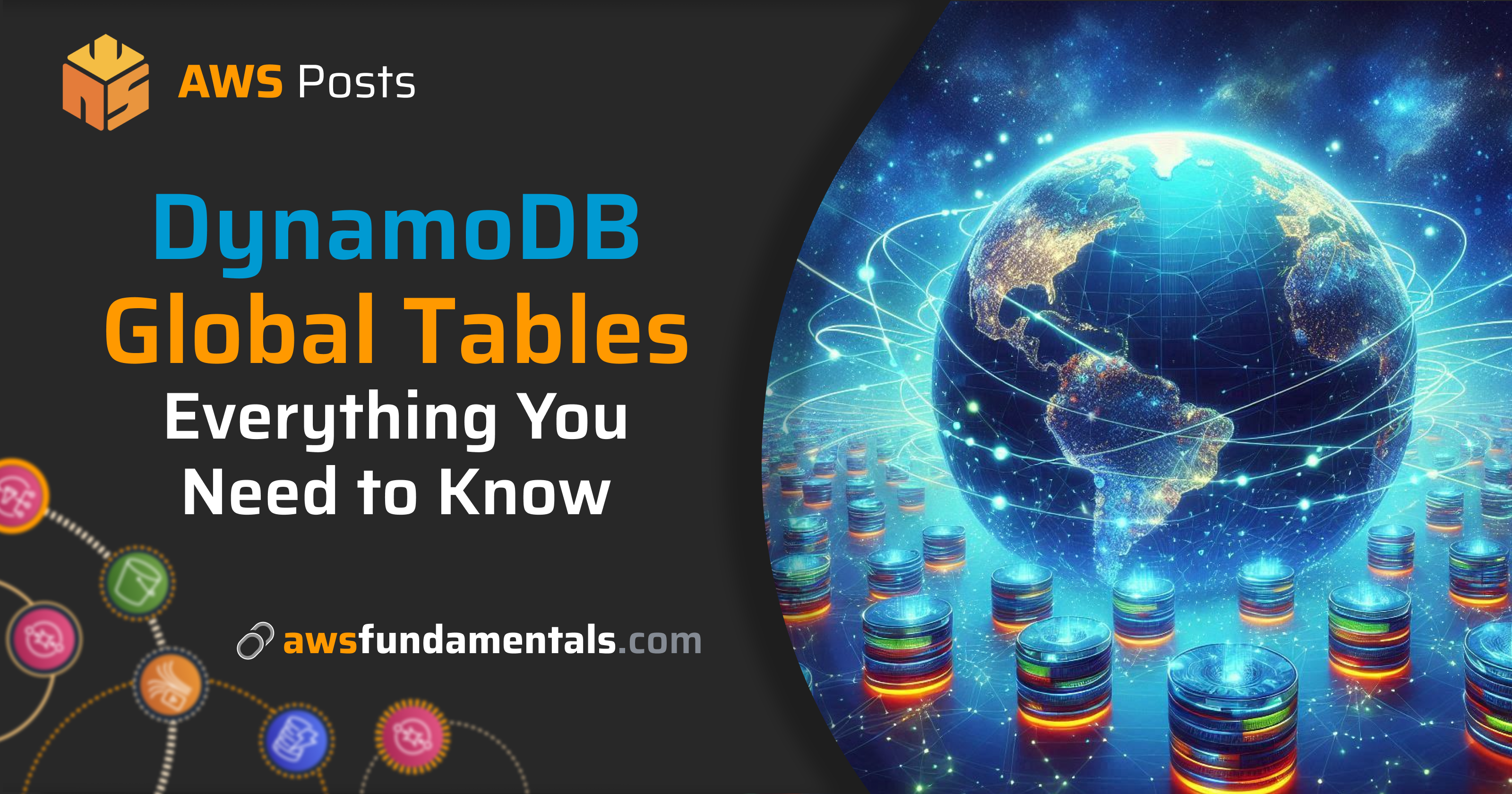
DynamoDB is one of the most popular services on AWS. You don't need to manage anything: there are no containers to keep running, no database connection pools to worry about, and none of the usual concerns that come with running a database.
Nevertheless, we always have to remember:
“Everything Fails All the Time” - Dr. Werner Vogels, CTO @ AWS
This can also be true for highly available managed services like DynamoDB. That's why you should always be prepared for anything, including a region outage on AWS's side.
DynamoDB makes it easy to deploy your tables to multiple regions using the Global Table feature to combat this potential issue. Also, it helps you to bring your data closer to your clients and reduce latencies.
In this article, we'll show you how to use this feature and what you need to consider carefully.
We’ve also provided a sample repository that you can explore and deploy to your own AWS account using SST.
What are DynamoDB Global Tables?
DynamoDB Global Tables allow you to replicate your DynamoDB tables across multiple AWS regions.
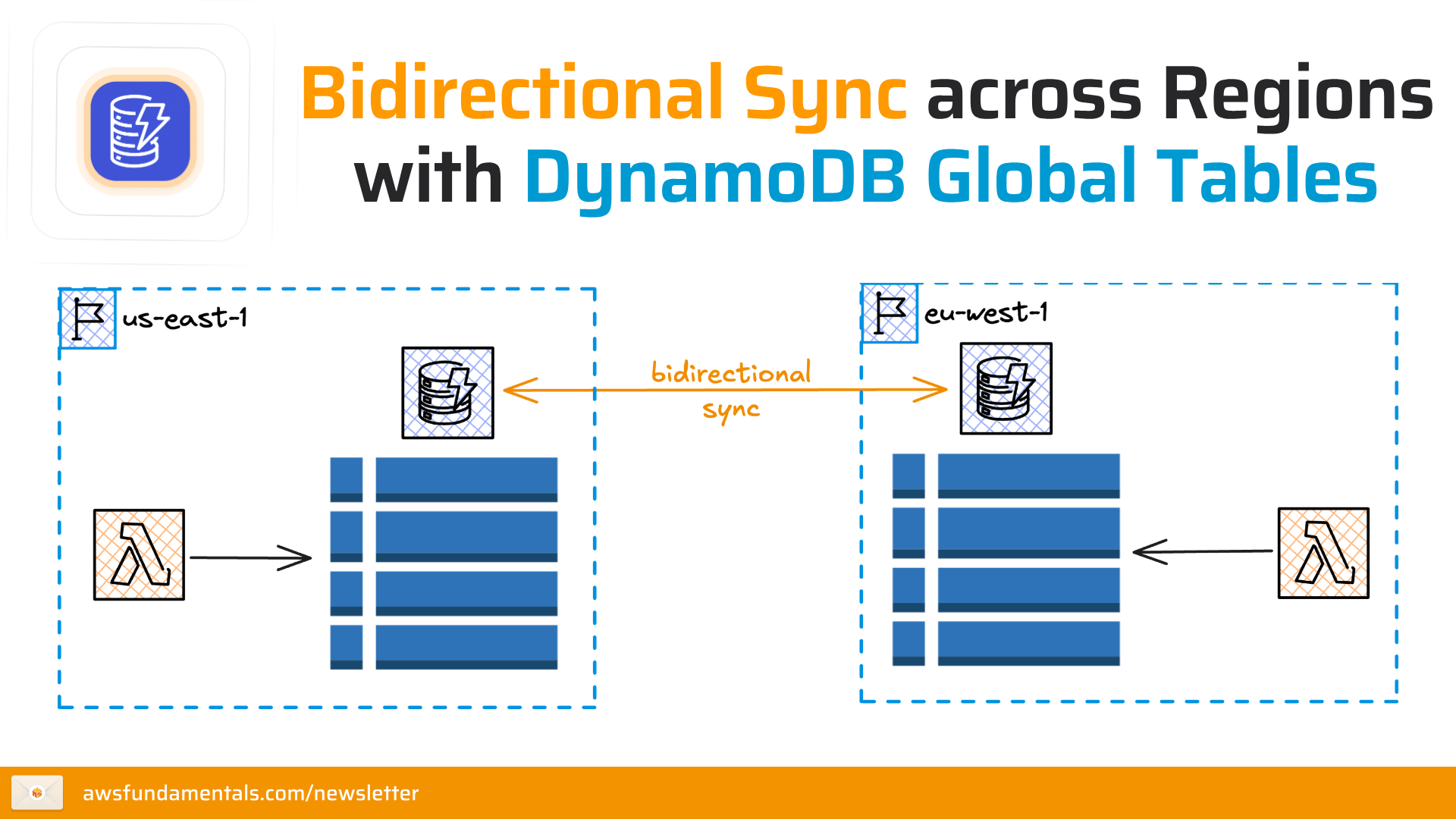
The key benefits are quite obvious:
Faster access to data for clients in different geographic locations. Even though the latencies of DynamoDB are quite fast across regions, keeping the data within the same data center as your application will always save a few milliseconds.
Prepared against region outtakes. Even if a whole AWS region has issues, your application will still remain accessible.
How DynamoDB Global Tables Work
Let’s dive into the technical details.
Data replication across regions
Data is replicated asynchronously across all specified regions, meaning changes made in one region will appear in others. This setup helps maintain data availability even if one region experiences issues.
DynamoDB completely manages this replication process without any manual interactions.
Conflict resolution and consistency models
Global Tables use a last-write-wins approach for conflict resolution, where the most recent update is kept. The system operates on an eventually consistent model, meaning data may not be immediately consistent across regions but will synchronize over time.
This is important to remember. If you have a multi-tenant application that might process the same database item in multiple regions at the same time, you could easily encounter synchronization issues.
Setting Up DynamoDB Global Tables
To set up Global Tables, create a DynamoDB table in one region and enable replication to other regions through the AWS Management Console, CLI or your favorite IaC tool like Terraform, CDK or Pulumi (you name it). You can specify which regions to replicate to and DynamoDB will take care of creating the mirror region(s) table(s) and enable to replication process.
Use Cases for DynamoDB Global Tables
Multi-Region Applications
Global Tables are useful for applications that serve users in multiple regions, allowing them to access data quickly from the nearest location. This setup improves the user experience by reducing latency without needing to implement caching mechanisms.
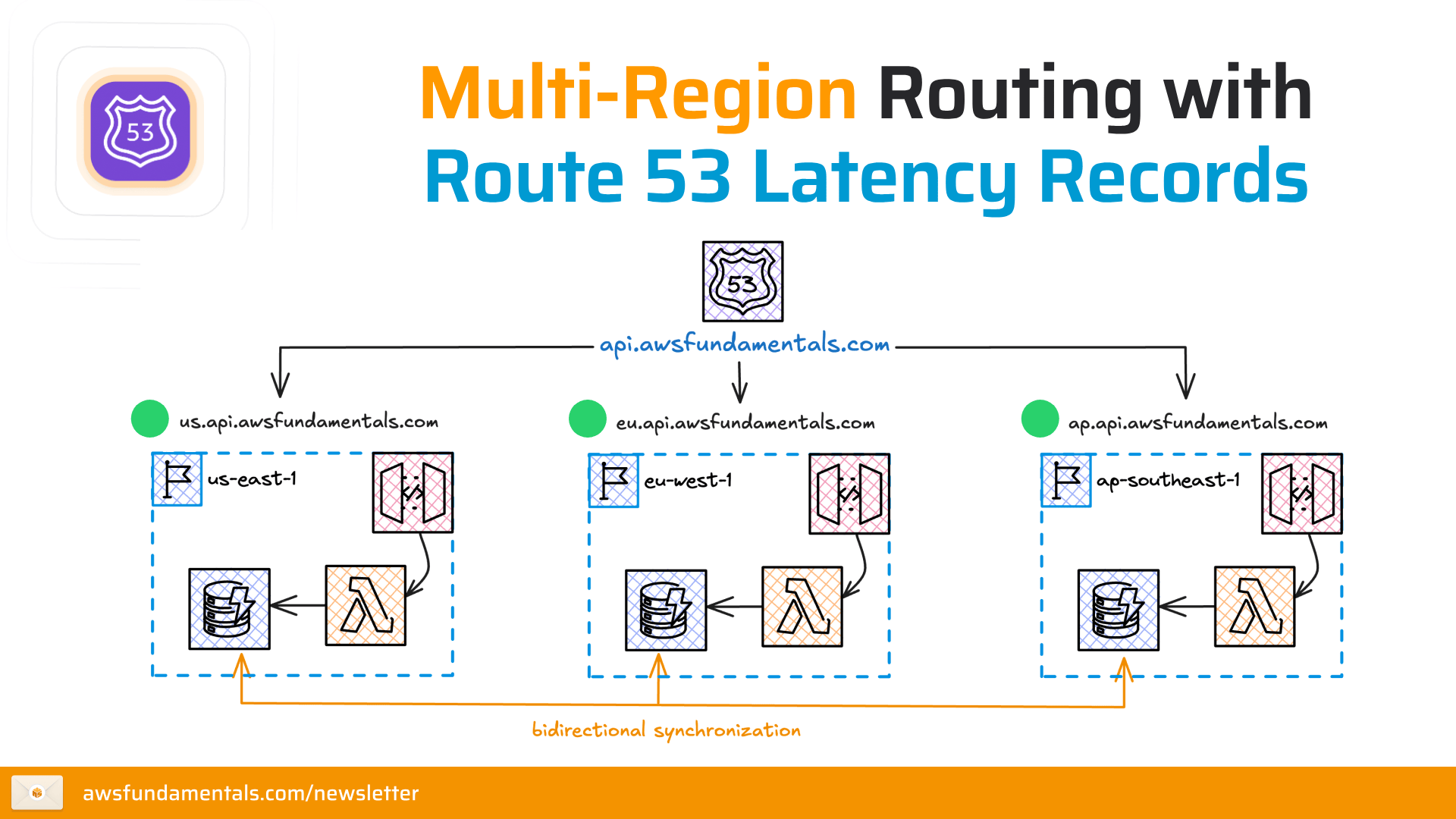
As DynamoDB runs in a pay-per-use model and it works well together with other equally charged services like Lambda, having a multi-region setup often doesn’t come with high additional costs. With services like Route 53 you can easily create a multi-region application that will automatically select the closest healthy region available.
High Availability & Disaster Recovery
Global Tables help with disaster recovery by keeping copies of data in different regions. If a region has an outage (or you’ve deployed a broken update to that region), the latency-based records of Route 53 can automatically notice this and redirect requests to a health region, even if it is further away from the source.
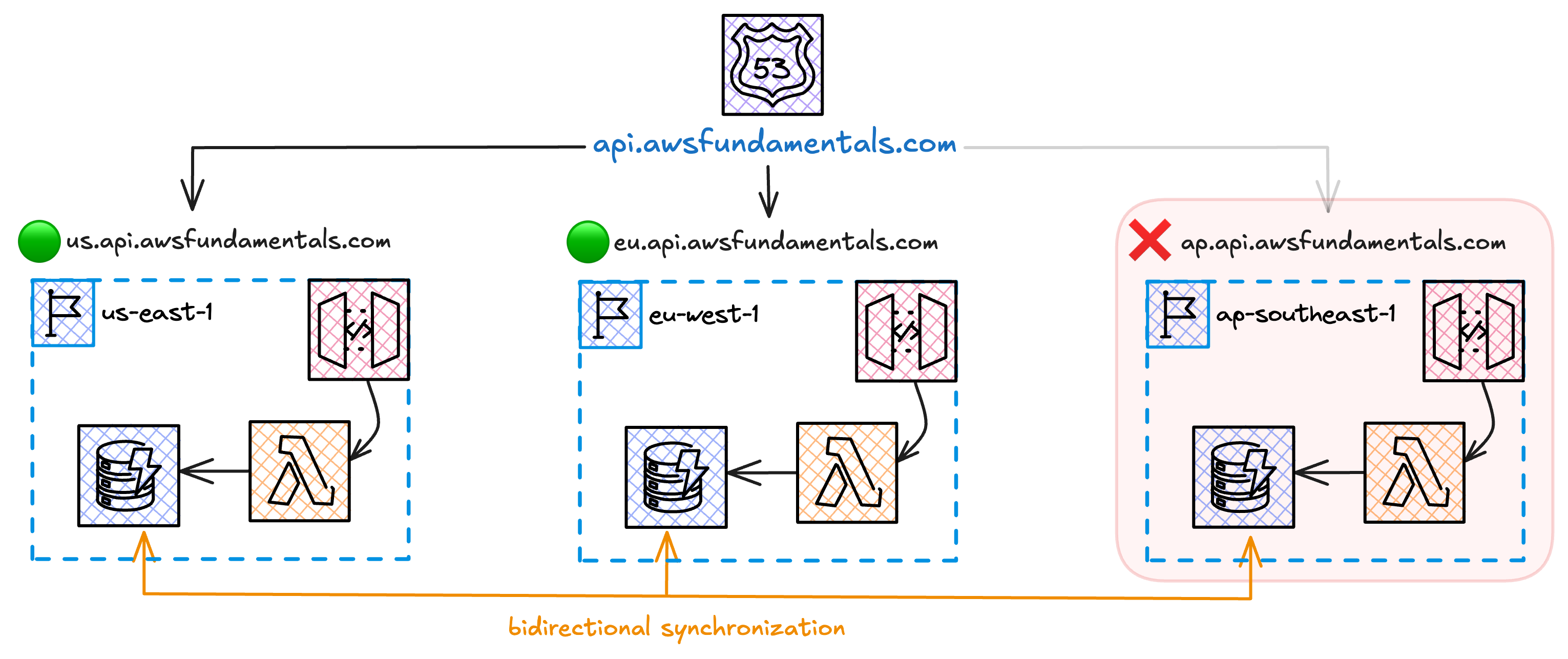
We’ve written a detailed article about how to set this up in the past.
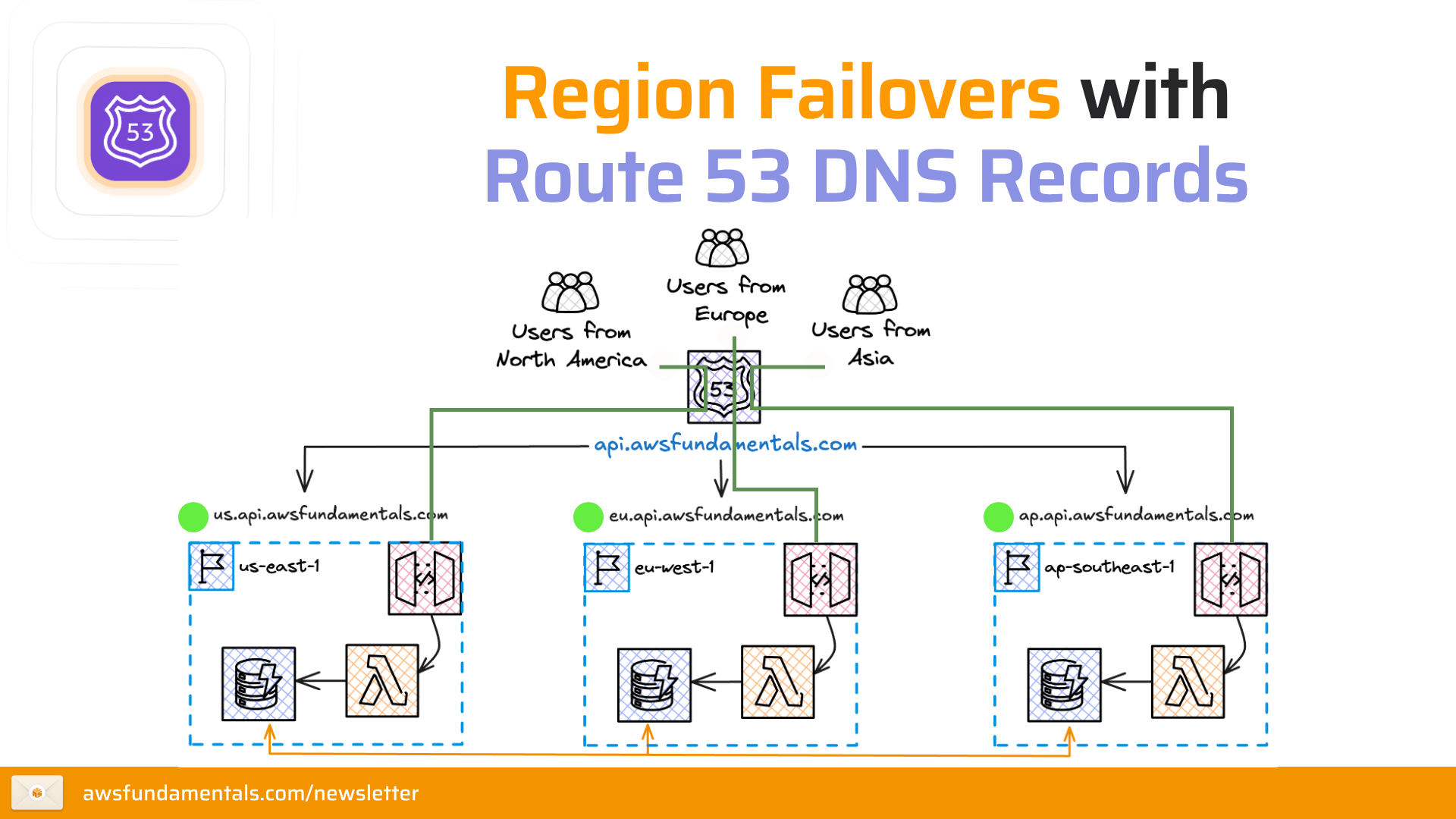
If you accidentally delete a replicated table (which is not easy to do), your data will still remain in the other regions.
Low-Latency Data Access
By replicating data across regions, Global Tables offer low-latency access for users worldwide. This is crucial for applications that need real-time data interaction. It achieves this without using complex caching techniques.
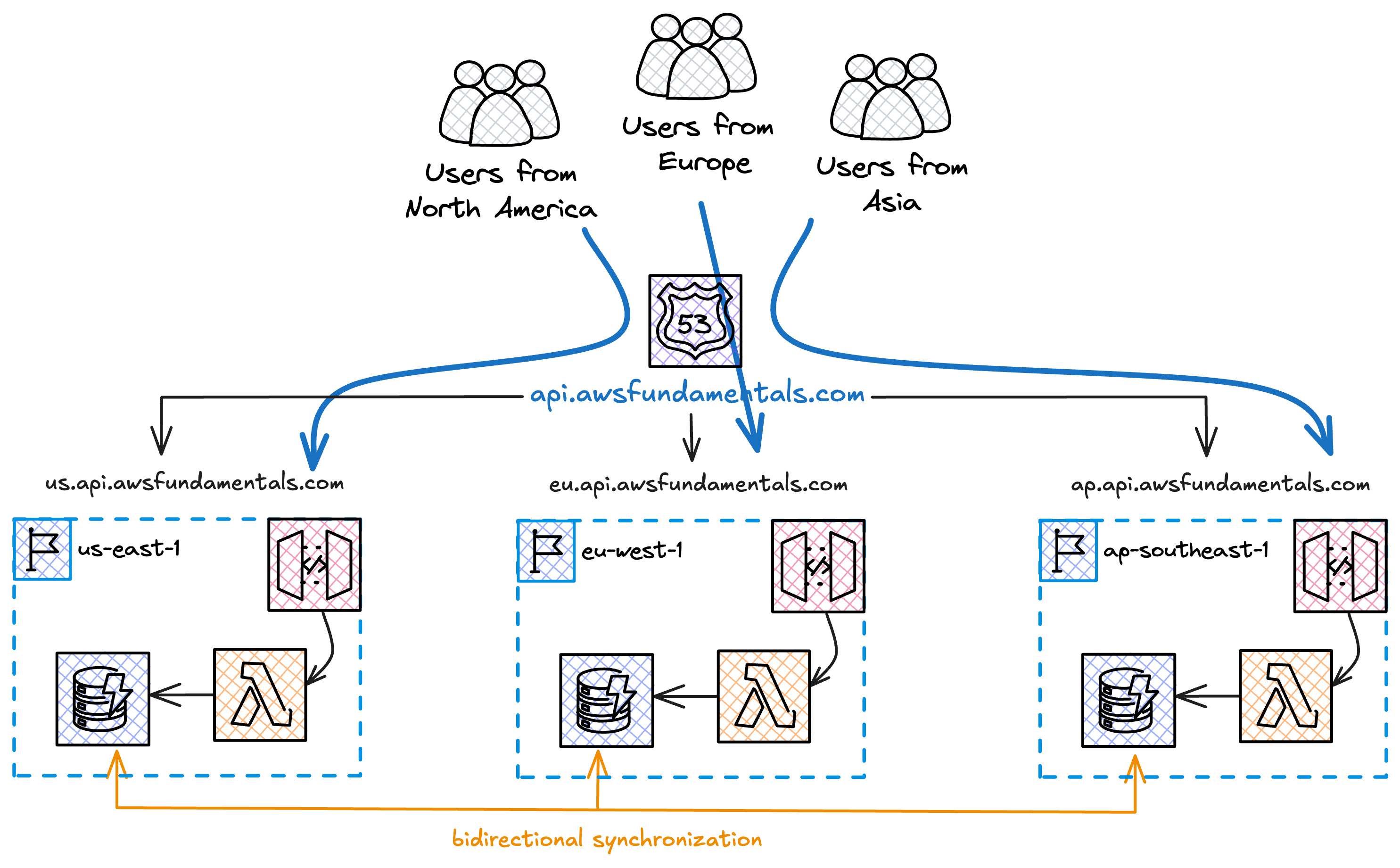
This architecture will always reduce response times by a few milliseconds because the application is closer to the users.
Common Challenges and Solutions
Everything has its challenges, and this is true for DynamoDB global tables as well.
Handling Data Conflicts
Conflicts can happen with concurrent writes in different regions. The simplest solution is to use only one region for write operations and treat all other regions as read replicas. The downside is that you'll lose multi-region high availability for writes. If the main write region goes down, your application will switch to read-only mode.
Data conflicts due to race conditions can happen in basically any multi-tenant application.
Stale Reads
Stale reads happen when an application reads data that hasn't been updated to show the latest changes because of replication delays. This can occur not only with DynamoDB global tables but with any data in a distributed system. It's also common in caches that aren't properly cleared.
In a multi-region setup with Global Tables, you can't completely avoid stale reads between regions.
However, to reduce stale reads in a single region (which can also occur!), you can use strongly consistent reads when possible. In DynamoDB, a strongly consistent read provides the most current data, showing all successful writes before the read. This ensures your application always gets the latest data, though it may result in higher latency and lower availability compared to eventually consistent reads.
Conclusion
DynamoDB Global Tables are a practical way to ensure your application remains available and responsive across multiple AWS regions.
By replicating data asynchronously, you can keep your application running smoothly even if one region experiences issues.
However, it's important to manage potential challenges like data conflicts and stale reads. Understanding these aspects will help you design a more effective architecture.
FAQ
What are DynamoDB Global Tables?
DynamoDB Global Tables are a feature that allows you to replicate your DynamoDB tables across multiple AWS regions. This ensures high availability and low-latency access.
How do DynamoDB Global Tables handle data conflicts?
Global Tables use a last-write-wins approach for conflict resolution. This means that if there are concurrent writes in different regions, the most recent update is kept. To minimize conflicts, you can designate one region for write operations and others as read replicas.
What are the benefits of using DynamoDB Global Tables?
The key benefits include faster data access for clients in different geographic locations and improved application availability during region outages.
How can I set up DynamoDB Global Tables?
You can set up Global Tables by creating a DynamoDB table in one region and enabling replication to other regions through the AWS Management Console, CLI, or Infrastructure as Code tools. DynamoDB manages the replication process automatically.
What challenges might I face with DynamoDB Global Tables?
Common challenges include handling data conflicts due to concurrent writes and dealing with stale reads caused by replication delays.
Subscribe to my newsletter
Read articles from Tobias Schmidt directly inside your inbox. Subscribe to the newsletter, and don't miss out.
Written by

Tobias Schmidt
Tobias Schmidt
Helping aspiring engineers master the cloud.